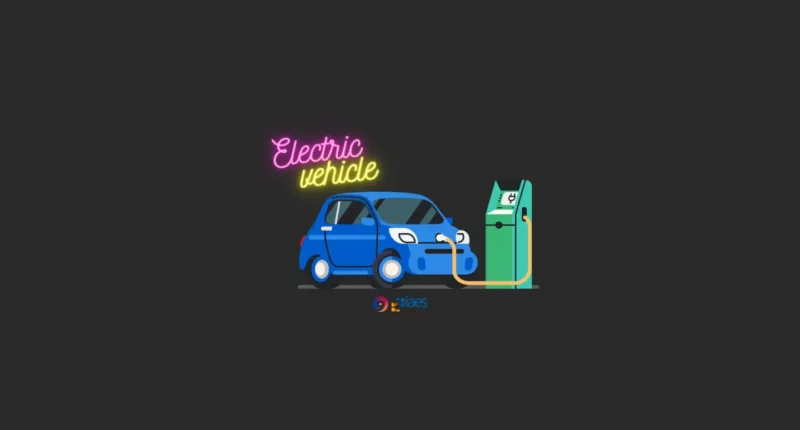In Indonesia, transportation has a role in fulfilling the needs of daily activities. But the more types of transportation used, the more air pollution. So without realizing it, people living in metropolitan cities like Jabodetabek, breathe air polluted by vehicle pollution. The use of petroleum as a vehicle fuel causes air pollution, and the combustion of refined petroleum in fuel can cause the formation of carbon dioxide in the air, meaning it can cause bad air pollution. Solutions are made to reduce air pollution by planting plants and not cutting down trees carelessly.
With the development of the times, humans began to find new and more advanced technologies such as electric vehicles. Electric vehicles do not produce residual emissions in the form of CO2 and CO, in contrast to ordinary diesel and diesel gas vehicles that can pollute the air. From some marketing of electric cars sold by Hyundai-owned manufacturers such as the IONIQ and Kona Electric cars, it is an attractive choice for environmentally friendly vehicles. Regarding the components of an electric vehicle, here are the things you need to know:
Traction Battery Pack
This electric car component functions to store and flow the direction of direct electric current, to move the traction motor, the controller can send a signal, then the traction battery will immediately move this electric current so that it can move the traction motor.
Inverter
This inverter component is a component of converting/changing direct current (DC) in the battery into alternating current (AC), the traction motor uses this alternating current. This inverter’s function is to convert AC during regenerative braking into DC to be used for recharging the battery.
Traction Motor
The traction motor is an electric dynamo that functions to move the transmission and wheels, it can be said that this traction motor is the most important component in electric cars, the most widely used type of traction motor is Brushless DC Traction Motor, while battery-powered cars traction motors replace the function of internal combustion engines.
Controller
The controller is one of the main components of an electric car. The controller functions as a regulator of the electric power channeled from the battery to the inverter and then drives the traction motor. The signal sent by this controller comes from the car pedal stepped on by the driver.
Auxiliary Battery
Auxiliary Battery made from electric power, this component is a storage and provider of electric current to turn on car accessories that are not included in the main components, such as air conditioners, wipers, alarms, and car lights.
Charger
The charger in this component functions as battery recharging equipment, converting AC electric current into DC and then stored in the battery, this charger is supportive, but not mandatory for every car because there are electric cars that do not need a charger to charge the electricity in the car.
DC-DC Converter
This DC-DC component converts the higher voltage DC electric power current from the traction battery package to a lower voltage. Usually electric cars store varied and sizable voltages between 60-1500 volts. In addition, the DC-DC converter also functions as a tool for charging electricity to the battery.
Thermal System
This thermal system functions to maintain an appropriate operating temperature range for the engine, traction motor, and various other electrical components. The role of this thermal system when used to control the car, the temperature of the car engine will become hot. So this is the role of the thermal system to maintain the temperature of the traction motor and other electrical components. That way, the car components remain at normal temperature even though the electric car is traveling fast for a long time.
Electric vehicles are not yet fully in demand in Indonesia, unlike in Europe where most people have started to switch to using electric cars. The advantages of electric cars include being environmentally friendly, without fuel oil, and not emitting smoke that can pollute the air. Electric vehicles also have instant torque on the engine that is immediately available when the accelerator pedal is stepped on and a quiet cabin that is less noisy than a normal car. Electric vehicles are also free from even-odd regulations, in DKI Jakarta some regulations make mobility increasingly hampered, but for electric cars, the provincial government exempts electric car drivers from even-odd rules. Although electric cars have many advantages, the price of per-unit cars is still relatively expensive, which is around 479 million. In addition, battery charging stations are still few and not yet spread in various regions, with long charging times, and expensive replacement battery prices.
But don’t worry, a lot of research on electric vehicles is starting to be developed. Related to its development, electric vehicles are widely discussed in articles published in the International Journal of Power Electronics and Drive Systems (IJPEDS), a journal that discusses within the scope of the fields of power electronics, electric drives, electromagnetics, thermal, electric machines, and even electric vehicles. Many expert researchers have sent articles from various countries of the world and discussed extensively in this field.
by: Erika Bimbi

